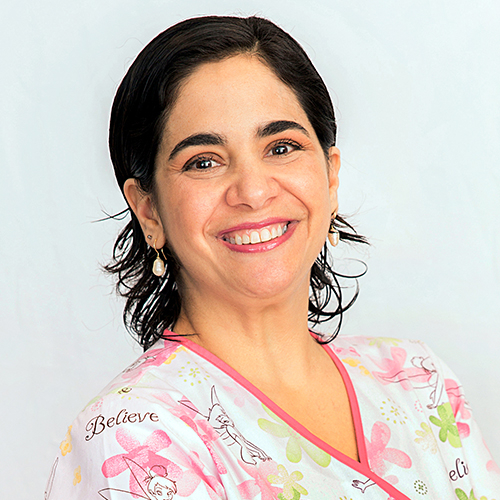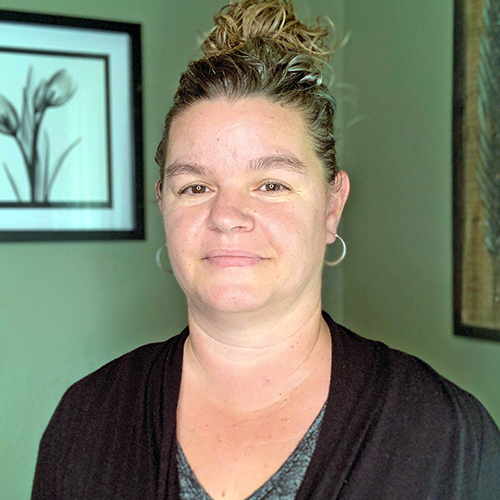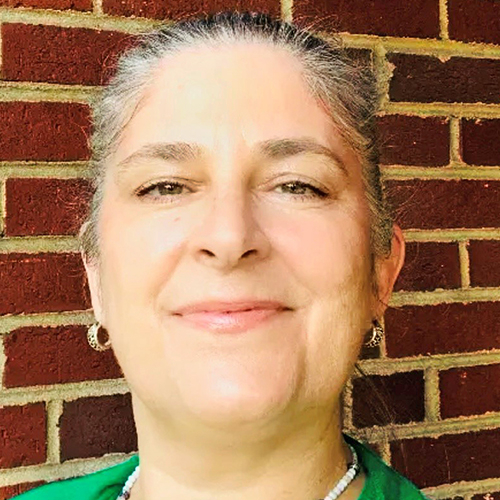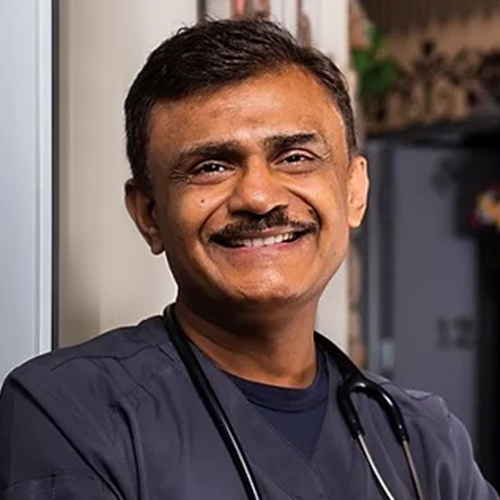GOLD Learning Tongue-Tie Online Symposium 2022
The GOLD Learning Tongue-Tie Online Symposium 2022 offers an exciting look at the latest research, perspectives and best practice when working with infants with oral restrictions and their families. 10 expert speakers present on informative topics. As our understanding of oral restrictions grows there's always something new to learn!
These presentations that will leave you feeling more confident and armed with clinical skills that you can put into practice right away to help the families in your care.
Please note Roberta Martinelli's presentation is presented in Portuguese with subtitles available.
Closed Captions
Please note that English and Spanish Language Closed Captions are available for presentations. To enable Closed Captions for any of our recordings, please hover your cursor over the video player to find the "CC" button on the bottom right corner that gives you language options.


Dr. Ankita Shah is a leading Airway Focused Dentist. She is also the President of the India Airway Co-LAB Chapter initiated by AAPMD, New York & The Breathe Institute, Los Angeles. Dr. Ankita is also the only Indian Ambassador to be trained by the renowned ENT & Sleep Surgeon Dr. Soroush Zaghi. The Tongue Tie & Sleep Institute headed by her focuses on providing a comprehensive, holistic and multidisciplinary approach to all problems Tongue Tie, Airway & TMJ. She wishes to change the way in which medicine has approached problems in the past and provide patients with a redefined experience to dentistry.
1: Explain the foundations of anatomy and fascia that are necessary when diagnosing TOTs
2: Describe how fascia impacts posture, facial development and tongue
structure, function & mobility through different age groups
3: Explain the role of a fascial tongue tie release
What are tethered oral tissues and what is the role of fascia? Fascia is a thin casing of connective tissue that surrounds and holds every organ, blood vessel, bone, nerve fiber and muscle in place. How is the fascial system connected to TOTS? The condition of tongue-tie and lip-tie exists on a continuum with variable visibility and symptoms differently across the body through different age groups. Some restrictions, mainly anterior or “classic” tongue tie, are highly visible and easier to detect. However, “posterior” or submucosal tongue-ties are often more challenging to diagnose. Through this session, we will explore a detailed dissection of what is fascia and how the concept of tongue ties has evolved and changed with the role of fascia and its impacts with TOTS. It takes a village of specialists to treat this challenging problem. We will learn how we can help prevent a vicious circle of problems if treated early with a holistic integrative approach.


Dr. Camila Palma obtained her Doctor of Dental Surgery (DDS) from Universidad Tecnológica de México (UNITEC), Mexico City. She also holds a Master of Science in Dentistry in Pediatric Dentistry (MSc) from the University of Barcelona, Spain and was certified as an International Board Certified Lactation Consultant (IBCLC) in 2019. Dr. Palma is Associate Professor in the Pediatric Dentistry Postgraduate Department, Peruvian University Cayetano Heredia, and Vice-president of the Peruvian Society of Pediatric Dentistry (2021-2023). She also has her own Pediatric Dentistry dental practice in Lima, Peru (Chis Dental). Dr. Palma is the author of several scientific articles, especially in caries prevention and infant oral healthcare. She is also a lecturer in Latin American and European Dental and Lactation Conferences and content creator on children´s oral health for parents through her YouTube channel (Dra. Camila Palma), instagram and Facebook accounts (@chisdental).
1. Describe the difference between retrognathia and a normal mandible.
2. Explain the impact of retrognathia and hypotonia on breastfeeding.
3. Explain why frenotomy is contraindicated in patients with severe retrognathia.
Ankyloglossia is an embryologic variation of the lingual frenulum, which causes a significant restriction in the mobility of the tongue. As such, an altered lingual function is always an essential consideration when faced with breastfeeding challenges. On some occasions however, other anatomic or functional alterations in the babies’ orofacial region can cause breastfeeding problems, similar to those seen in tongue-tie babies. They can be the root of latch difficulties, nipple trauma and/or suction and deglutition issues. In these cases, frenotomy does not solve those problems and therefore, the misdiagnosis and posterior surgical treatment can frustrate parents. From a pediatric dentist perspective, retrognathia (recessed chin) and hypotonia are two common differential diagnosis of tongue tie, which can affect a babies’ suction at the breast. The aim of this talk is to present normal and abnormal orofacial structures so as to differentiate ankyloglossia from two problems that can be part of a “faux tie”, in order to aid breastfeeding consultants, and broaden their perspective on breastfeeding difficulties.


Christine Staricka is a Registered, International Board-Certified Lactation Consultant and trained childbirth educator. As the host of The Lactation Training Lab Podcast, her current role focuses on training and coaching current and aspiring lactation care providers. Christine created and developed The First 100 Hours© concept, an early lactation framework designed to support lactation care providers with the knowledge and mindset they need to help families optimize early lactation. Christine worked as a hospital-based IBCLC for 10 years and has over 20 years experience providing clinical lactation care and support. She provides clinical lactation care to families at Baby Café Bakersfield and serves as its Director. Christine recently completed 6 years of service on the Board of the United States Lactation Consultant Association (USLCA.) She holds a Bachelor's Degree from the University of Phoenix. She has been married for 27 years, lives in California, and is the proud mother of 3 amazing daughters.
Topic: Tongue-Tied and Troubled: A Breastfeeding Journey at Risk - [View Abstract]
Topic: Your Responsibility to the WHO Code: Evaluating Real-World Scenarios for Compliance - [View Abstract]
1. Describe 3 characteristics of a lactation scenario involving tongue-tie which can trigger stress or strong emotions in the mother or lactating parent
2. Describe 3 behaviors which can be indicators of a need for screening for postpartum mood disorders
3. List 4 areas for questioning and counseling that lactation care providers should use to address common stressors in a lactation scenario involving tongue-tie
A suspected or diagnosed tongue-tie can throw a breastfeeding journey into immediate peril, with concerns over the baby's well-being most often discussed and debated. However, without an appropriate and intentional strategy for supporting the mother, the breastfeeding journey risks meeting an untimely, unplanned, and/or unsatisfactory end. The mental and emotional toll such a complex lactation situation can take on parents is wide-ranging in its effects, and it is critical to provide personalized and comprehensive counseling to restore a sense of empowerment and control to the mother as she makes continual decisions on how and whether to proceed with lactation and breastfeeding. Additionally, it is vital that indications of postpartum mood disorders are recognized and addressed as early as they appear. Lactation care providers can benefit from a clear framework for their fundamental responsibility to safeguard both the mother and child in a breastfeeding dyad. In this presentation we will explore ideas and themes that can guide the lactation care provider to ask the right questions at the right times in the specific context of tongue-tie so that they can offer effective counseling and care.


Dr Philip Hand practices in Melbourne, Australia . His certifications include: BDS (Otago N.Z.), FICCDE LA&HA Master in Laser Dentistry (Slovenia), MSc Laser Dentistry (UCSC – Rome). He is the Secretary of the International Academy of Innovative Dentistry (IAID) and Assistant Professor UCSC-Rome. Dr. Hand is interested and practices in all fields of general dentistry. These include Implant Dentistry, Endodontics, Periodontics and Orthodontics (POS Graduate). He is a devoted proponent of the use of the dental microscope and dental lasers. He is passionate about tackling the issues and treatment for infant feeding both breast and bottle, airway health and growth and sleep from a dental perspective. He works collaboratively with lactation consultants, maternal health nurses, paediatricians, paediatric osteopaths and chiropractors in the treatment of infants in this pursuit and is actively involved in teaching the importance of this treatment for our patients from infants to adults.
1: Explain the importance of tongue movement for feeding and facial growth and how to make an assessment of restrictive frena (restrctive tethered oral tissues).
2: Detail the results of new research in relation to improvement in infant reflux and mother's comfort after release of restrictive tethered oral tissues.
3: Describe the ideal team of professionals and their roles to achieve the best treatment outcomes for tongue-tied infants
This presentation will look at new research into lingual frenulum restriction and its surgical release to achieve improvement in problems with reflux, breastfeeding and pain for the breastfeeding mother. I will also expand this into restrictive tethered oral tissues (lip-tie, buccal-tie) as a whole, as this was part of my published study into the laser surgical release of restrictive tethered oral tissues on breastfeeding and Gastroesophageal Reflux Disease (GERD). Learn more about the impact of surgical release (frenotomy) of tongue- tie, lip-tie, buccal-tie on both reflux and breastfeeding outcomes for the classically recognised anterior tongue-tie and the less obvious (without functional assessment) posterior tongue-tie. Posterior tongue-tie was noted in 71% of the study cohort.


As a little girl, Melanie had the opportunity to watch her OBGYN dad deliver babies and it was such an incredible process to be a part of, she knew she wanted to help babies when she grew up. She received her bachelor’s degree in Family Science from Brigham Young University and worked in adoption until she had her first of six children, which included twins, all of which she was able to exclusively breastfeed. She struggled with postpartum depression which has helped her to be all the more compassionate towards the mothers she works with. Once all 6 children were in school, she became a certified postpartum doula and focused on guiding families mainly with multiples. Given her personal experience, she felt called to serve breastfeeding mothers, so she went back to school to become an IBCLC. She has a passion for helping breastfeeding dyads and also loves educating others about the importance of treating ties. She feels very blessed to have trained with some of the top in the tongue tie field and hopes to continue to spread the word to help increase breastfeeding success.
1. Explain the importance of considering additional aspects of why infants may be struggling beyond syndromes
2. Describe how low tone causing breastfeeding struggles in Down syndrome infants is not always from the syndrome, but can be from an untreated tongue tie
3. Explain why tongue tie release should be considered before G tube
4. Describe how to help infants that are diagnosed “Failure to Thrive”
Improve your investigation skills as we walk through case studies of infants with tongue ties that were initially missed and the subsequent consequences. We will then review once the ties were found how a frenectomy with complete release improved or completely resolved their symptoms. We will examine studies that involve infants with Down syndrome, G tube, NG tubes, and failure to thrive. Learners will be empowered to assess with more accuracy by relying on their knowledge of symptoms and function in addition to standard anatomical assessments. This will improve outcomes for breastfeeding dyads allowing more tongue-ties to be found earlier on.


Michelle has been a pediatric neurodevelopmental Occupational therapist specializing in precrawling infants for over 26 years. She has specialty certifications and training in lactation, manual therapy, and pre and peri natal psychology. Michelle has specialized in optimal cranial nerve function and oral restrictions, with an emphasis on infant movement, innate biological imperatives and human potential, providing novel curriculums, support and resources for both professionals and parents. She enjoys collaborating and working in teams for babies and families going through the tethered oral tissues release process.
Topic: Breastfeeding and Cranial Nerve Dysfunction – the what, who and why of Cranial Nerve Dysfunction in the newborn to precrawling baby - [View Abstract]
Topic: Compensatory vs Novel Movements: 3 Keys for Babies With Tongue, Lip and Buccal Restrictions - [View Abstract]
Topic: Interoception: Beyond the Homunculus....The Real Sixth Sense and Its Primary Function as Sensory Input to the Autonomic Nervous System - [View Abstract]
Topic: The Vagus Nerve: Branchial Motor / Special Visceral Efferents: The Pharynx, Larynx, Soft Palate and one tiny tongue muscle - [View Abstract]
Topic: TummyTime!™ : A Therapeutic Strategy for Parents and Babies - [View Abstract]
1. Learner will describe the top 3 compensatory strategies seen in precrawling babies with tethered oral tissues
2. Learner will describe 3 novel movements to elicit for optimal breastfeeding
3. Learner will list the 3 keys to eliciting novel movements and eliminating compensatory movement strategies for babies after release of tethered oral tissues
Babies with tongue, lip and buccal ties commonly present with altered or compensatory movements of the tongue, lips, face, mandible, neck and whole body. These compensations are secondary to restrictions and subsequent oral dysfunction that results from not having full range of motion and movement of the tongue, a vital organizational organ of the body. While these compensatory strategies have been somewhat functional prior to release, once the ties are released, babies need novel movements to emerge for function to improve and breastfeeding to experience a positive shift. The difficulty is that novel movements often do not spontaneously arise, requiring therapeutic intervention. In this talk, Michelle will discuss 3 keys to eliciting and strengthening novel and more competent oral patterns and feeding abilities after release while making compensatory strategies obsolete.


Dr. Agarwal went to medical school at All India Institute of Medical Sciences, AIIMS, in New Delhi, which is the premiere institution for medical training in India. After which, he came to the United States for his Pediatric Residency at the University of Texas Medical Branch at Galveston. Subsequently went on to join the Pediatric Nephrology fellowship at University of Florida at Gainesville. Under the program, he also conducted bench research at Ohio State University. Dr. Agarwal worked on the Eastern Shore of Virginia for eight years in general pediatrics before moving to Arizona to establish Agave Pediatrics in 2005. Over the years Dr. Agarwal has developed his own style of practicing pediatrics, which is strongly supportive of natural ways of taking care of children and emphasis on breastfeeding. During his practice, he realized that one of the biggest impairments in breastfeeding was the presence of labial and lingual ties. Having performed some procedures during medical school, he re-educated himself about the procedure and started performing them in 2007. In the last 15 years, Dr. Agarwal has performed more than 18000 frenotomies. Now, along with a busy clinical practice, he has made it his goal to spread the awareness about the issues related to labial and lingual ties to pediatricians, lactation consultants, doulas, midwives -everybody who helps mothers with the process of breastfeeding and in taking care of children with feeding and speech difficulties.
1: Explain the details of pre-frenectomy anticipatory guidance.
2: Describe post frenectomy management of pain, and exercises that may decrease the incidence of reattachment
3: Describe the nuances of care for the dyad, and the importance of individualizing care for the best possible results post frenectomy."
Frenectomy has become an increasingly more common procedure since the resurgence of interest in breastfeeding. Patient selection and anticipatory guidance provided to the family are key to success in reaching their goals. An honest discussion about the indications for doing the procedure and providing them with resources preemptively help in establishing trust and the future success of the procedure. After the procedure the care of the baby and the site are very intimidating to families and support at that time is vital to the success of the procedure. The post procedure experience can vary widely and to an extent depends on the family’s readiness. It is very important that post procedure be discussed before the procedure and support given after the procedure. Ultimately, the pre and post procedure interventions make the experience wholesome and conducive to successful breastfeeding.


SALP expert in Orofacial Myology. PhD in Science USP - University of São Paulo. Chief of lingual frenulum evaluation sector at Santa Therezinha Hospital/ Brazil
1. Explain the importance of tongue movements for breastfeeding.
2. Describe the impact of limited tongue movements caused by ankyloglossia on sucking, swallowing, chewing, breathing and speaking.
3. Explain the step-by-step assessment of the lingual frenulum through the Lingual Frenulum Assessment Protocol for Infants.
Tongue movements are essential for milk extraction during breastfeeding. It is therefore very important that professionals are able to reliably identify anatomical variations in the lingual frenulum that may impact infant feeding. Learn more about how to use the Lingual Frenulum Assessment Protocol for Infants. This tool allows assessment of changes in the lingual frenulum and limitation of tongue movements, which can compromise the functions of sucking, swallowing, chewing, breathing and speaking.


Sarah Hornsby is a registered dental hygienist, orofacial myofunctional therapist, speaker, mentor, and entrepreneur. She’s the founder and creator of MyoMentor, a comprehensive mentorship and online educational platform for myofunctional therapy with over 900 graduates as of August 2022. She’s passionate about merging technology into patient care and has been a pioneer in utilizing telehealth practices in the field of myofunctional therapy since 2014. Sarah is a provider advocate as much as she is an advocate for her patients. Her goal is to empower hygienists and dentists to elevate the standards of care by helping their patients through healthy breathing, airway dentistry, myofunctional therapy, and multi-disciplinary collaboration. She opened Faceology, her private myofunctional therapy practice, in 2010 and today it is a thriving telehealth speciality clinic with a focus on adult patient populations and complex treatment cases. Although Sarah has been a myofunctional therapist for over 10 years, it was actually her own health journey that led her down the path to help her patients.
1. Describe how tongue-ties impact sleep and breathing
2. Explain how tongue-ties impact our orofacial structures and craniofacial development
3. Describe how tongue-ties impact our soft tissue function
When it comes to addressing tongue-ties in medicine and dentistry, there is a large emphasis on treating infants in order to achieve optimal breastfeeding. But what happens to the babies who grow into children and adults without addressing their tethered oral tissues, and they end up as adults with tongue-ties? This presentation will discuss the challenges and symptoms that tongue-tied adults face later in life due to restricted lingual frenums. Knowledge of long-term implications is an important part of clinical teaching when explaining tongue-tie to caregivers or colleagues.


Sarah is a Registered General Nurse, Health Visitor, International Board Certified Lactation Consultant and Tongue-tie Practitioner with a busy private practice based in Cambridgeshire, UK. Sarah worked as a volunteer breastfeeding counsellor for the Association of Breastfeeding Mothers for several years and continues to run a weekly breastfeeding support group as a volunteer. Sarah is a founder member and former Chair of The Association of Tongue-tie Practitioners in the UK and is the author of the book, ‘Why Tongue-tie Matters’. She offers an online course in tongue-tie and infant feeding in association with Babyem and provides education on infant feeding and tongue-tie for healthcare professionals and breastfeeding supporters in the public, private and volunteer sectors.
Topic: Is This a Tongue-Tie: How Do We Decide? - [View Abstract]
Topic: The Elephant In The Room - Bleeding Post Tongue-Tie Division - [View Abstract]
1. Describe the challenges faced by parents of tongue-tied babies during the pandemic.
2. Explain how provision of care changed during the pandemic and what the long term implications of this have been.
3. Describe what the specific concerns were in relation to tongue-tie division which led to changes in provision during the pandemic.
This presentation will examine the impact Covid 19 had on infant feeding and in particular the provision of tongue-tie services in the UK and other parts of the world during the period March to September 2020. It will look at the impact changes in provision had on the infant feeding experiences of families. It will also explore how practitioners managed services during the pandemic and what the lasting effects on those services have been. Specific concerns around transmission of Covid 19 during oral procedures will also be considered. Consideration to lessons learned will be given.
Accreditation
CERPs - Continuing Education Recognition Points
Applicable to IBCLC Lactation Consultants, Certified Lactation Consultants (CLCs), CBEs, CLE, Doulas & Birth Educators. GOLD Conferences has been designated as a Long Term Provider of CERPs by IBLCE--Approval #CLT114-07. This program is approved for 10 CERPs (9 L-CERPs, 1 R-CERP).
ASHA - Professional Development Hours for Speech-Language Pathologists
According to ASHA, this activity qualifies for 10 PDHs. Activities are accepted as PDHs if they contribute to your professional development and will lead to acquiring and enhancing skills and knowledge required for independent audiology and SLP practice. Please review ASHA's Acceptable Activities for Professional Development for more information.
Dietetic CPEUs - Continuing Professional Education Units
Applicable to Dieticians & Nutritionists, this program is approved for 10 Dietetic CPEUs by the Commission on Dietetic Registration, the credentialing agency for the Academy of Nutrition and Dietetics.
If you have already participated in this program, you are not eligible to receive additional credits for viewing it again. Please send us an email to [email protected] if you have any questions.
Tags / Categories
(IBCLC) Clinical Skills, (IBCLC) Education and Communication, (IBCLC) Infant, (IBCLC) Pathology, (IBCLC) Research, Tongue-tie, Lip Tie & Structure
How much time do I have to view the presentations?
- The viewing time will be specified for each product. When you purchase multiple items in your cart, the viewing time becomes CUMULATIVE. Ex. Lecture 1= 2 weeks and Lecture Pack 2 = 4 Weeks, you will have a total of 6 weeks viewing time for ALL the presentations made in that purchase.
- Time for viewing the talks begins once you purchase the product. For Live Webinars & Symposiums, the viewing period begins from when the live event takes place. Presentations can be accessed 24/7 and can be viewed as many times as you like during the viewing period.
What are bundled lectures?
- Presentations may be available individually or via a bundled package. Bundled lectures are a set of lectures that have been put together based on a specific category or topic. Some lectures will be available in both individual and lecture form, whereas others will be available only via a bundled lecture pack.
Will there be Handouts?
- YES! Each lecture comes with a PDF handout provided by the Speaker.
Some lectures include a Q&A, what does that mean?
- During our online conferences, presentations that occur live are also followed by a short 15 minute Question & Answer Session. The Speaker addresses questions that were posted by Delegates during the presentation. We include the recording of these Q&A Sessions as a bonus for you.
How can I receive a Certificate?
- If this presentation offers a certificate, once you are done viewing the lecture or the lectures within a bundle, submit your attendance record in order to be able to download your certificate. You'll be able to see which credits are offered for the lecture by hovering over the "Credits Available" link within the "Speakers & Topics" tab.
Professionals that selected this package also viewed

|
|

|












